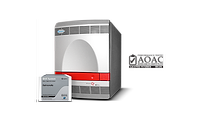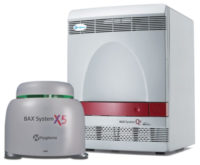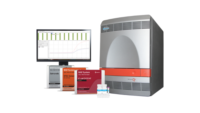Hygiena Introduces More Accurate, PCR-based Alternative to Quantify Salmonella Contamination in Poultry

Hygiena has introduced a method that uses the BAX® System for Real-Time PCR to more accurately quantify the amount of Salmonella in poultry facilities. The method, which is an alternative to traditional Most Probable Number (MPN) technique, was unveiled at the International Association for Food Protection annual meeting in Louisville, Kentucky.
Currently, poultry and other commodity production facilities utilize the MPN method to enumerate Salmonella. Most Probable Numbers, however, is costly, labor-intensive, and can take up to 72 hours to gather results from serial dilutions. Salmonella has been a constant concern for the poultry industry, and the US Department of Agriculture has begun demanding prevalence levels of no higher than 23 percent in a facility. Currently, poultry production facilities have been recording 50 percent prevalence rates on average, and processors have been searching for better, more accurate detection and quantification techniques that provide increased resolution into their food safety programs.
“Salmonella naturally thrives in poultry and can spread throughout the carcass during processing, resulting in a chronic challenge for the industry,” says Tyler Stephens, Ph.D., territory sales and government affairs manager at Hygiena and a co-inventor of the Salmonella-Quantification (Sal Quant) method. “The BAX PCR solution generates rapid, real-time data in the processing facility, giving processors the actual size—and source—of reservoirs harboring Salmonella.”
The Sal Quant method uses the BAX® System Q7 and BAX® System PCR assay for Salmonella, performing real-time PCR on samples collected from a facility. Running samples on the Q7 generates cycle threshold values (CT) for positive samples, which can be used to quantify the number of colony-forming units (CFUs) in any sample. Lower CTs indicate a higher level of contamination, and data curves from these results can be computed to determine levels of contamination.
“The BAX Sal Quant results provide real data for making key decisions like slaughter order, corrective actions, line speed, gut health, and water contamination,” said April Englishbey, Ph.D., Technical Support Specialist at Hygiena and Sal Quant Project Manager. “This alternative to MPN can be used in almost any industry matrix, including boot swabs, ceca, whole viscera packs, whole bird, parts, and skin rinsates, and ground turkey or chicken final products. You can literally enumerate bacteria from flock to final product.”
Hygiena | Hygiena.com
Looking for a reprint of this article?
From high-res PDFs to custom plaques, order your copy today!





